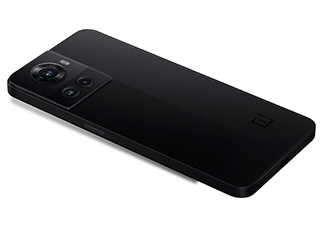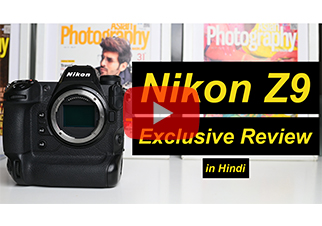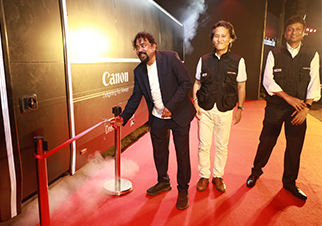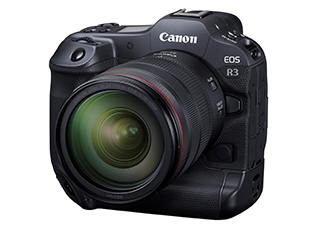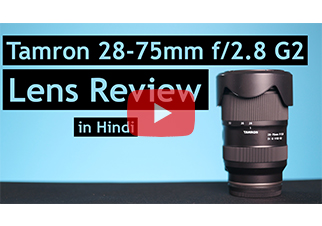OnePlus recently launched the OnePlus 10R 5G smartphone, which has been positioned below the OnePlus 10 Pro 5G. The phone features an all-new MediaTek Dimensity 8100-MAX CPU, SuperVOOC 150W quick charging capability among other features that are supposed to be the characteristics of the OnePlus 10R. The smartphone also features a 50-MP OIS camera and a 120 Hz fluid AMOLED display. So we’ve been testing this phone for a while now, and here’s what we thought of it in our review of the OnePlus 10R 5G.
OnePlus 10R 5G Specifications
• Display: 6.7-inch AMOLED 10-bit colour display, Full HD+ resolution (2,412 x 1,080 pixels), 120 Hz adaptive refresh rate, 360 Hz touch sampling rate, 100% DCI-P3 colour gamut, HDR10+, Corning Gorilla Glass 5 (front)
• Software: OxygenOS 12.1 interface, Android 12 operating system
• CPU: 5nm MediaTek Dimensity 8100-MAX octa-core SoC clocked at 2.85 GHz (Cortex-A78 processor), AI APU 5.0
• GPU: Mali-G610 MC6 Graphics
• Memory: 8 GB OR 12 GB LPDDR5 RAM
• Storage: 128 GB OR 256 GB UFS 3.1 internal storage
• Main Camera: Triple cameras (50 MP f/1.8 Sony IMX766 OIS camera + 8 MP f/2.2 ultra-wide camera + 2 MP f/2.4 macro camera), Optical Image Stabilization, 4K Video Recording, dual-LED flash
• Selfie Camera: 16 MP f/2.4
• Others: In-display fingerprint scanner, Face Unlock
• Cellular: 5G network, dual SIM, dual 5G standby support
• Battery: 5,000 mAh battery (2x 2,500 mAh, non-removable)/ 4,500 mAh battery (150W model)
• Charging: 80W fast charging, 150W SuperVOOC fast charging (12 GB + 256 GB model)
OnePlus 10R 5G Price in India
• ₹38,999 for 8GB RAM and 128GB Storage with 80W Super VOOC Charging
• ₹42,999 for 8GB RAM and 256GB Storage with 80W Super VOOC Charging
• ₹43,999 for 8GB RAM and 256GB Storage with 150W Super VOOC Charging
Look, body and feel
The phone is different than its predecessor when it comes to look, body and feel. On the front, it appears that OnePlus has redesigned things, which does not surprise us at all. The general form has been flattened rather than curved as seen in previous generations, the back and side frames are plastic/polycarbonate constructed, which was unexpected, and there is no trace of glass or metal on the exterior. The flat design has become a trend, similar to what happened with the current some of the other phones in the market. For those who have used prior OnePlus phones before, the lack of a glass or metallic back might make you feel that the 10R 5G a letdown in its sector in terms of aesthetics.
However, the redesign provides a strong grip, and the smartphone is now somewhat thinner with only 8.2 mm and lighter weighing only 186 grams. We received the Sierra Black model, which features a dual-tone design with one textured and one matte-finished, and the Forest Green variant, which has the same design but in a different hue.
The OnePlus 10R 5G has a far superior display, with a 6.7-inch fluid AMOLED and 10-bit colour depth (1B colours). The display has a Full HD+ resolution (2412 x 1080 pixels, 394 ppi), a refresh rate of 120 Hz, and a 20.1:9 aspect ratio. The Fluid OLED display has an adaptable refresh rate of 60 Hz, 90 Hz, and 120 Hz, as well as a touch response rate of 360 Hz (hardware-based) and 720 Hz (software-based).
But the Alert Slider is now missing, which might be a disappointment for many. The right side simply has a power button, whilst the left side has two volume controls. The bottom side features a USB Type-C connector for rapid charging, data transmission, and audio output, as well as a stereo loudspeaker, microphone (with another at the top), and dual SIM tray. The tray allows twin 5G SIM cards with dual standby, although the phone lacks a microSD slot.
OnePlus 10R 5G camera
The OnePlus 10R boasts three rear cameras; the primary camera has been enhanced, but the secondary cameras appear to be toned down in comparison to its predecessor. On paper, the OnePlus 10R 5G features a 50-megapixel camera with the Sony IMX766 sensor (against the 48 MP IMX586 sensor on the OnePlus 9R), however it has a downgraded 8-megapixel ultra-wide-angle and 2-megapixel macro camera. The 16 MP selfie camera looks to be the same as previous versions. The phone lacks a telephoto lens, but it does have OIS, which is really useful in photography. The camera has optical image stabilisation (OIS), electronic image stabilisation (EIS), 4K video recording (at 30fps), 1080p slow-motion recording and a dual-LED flash. The camera app is well-designed, making it simple to find what you want. The UI has a 50-megapixel camera mode, portrait mode, Pro, Pano, Macro, Slow-mo, Time-lapse, Dual-View Video, Movie, AI filter, HDR, and Night mode.
Day-light performance
The camera worked admirably in terms of day-light images. The photographs captured by the OnePlus 10R were excellent. However, we found the images to be too sharpened and overly saturated sometimes. Also, the camera functioned well in portrait mode, with the backdrop blurring nicely and the edge recognition working decently.
Low-light performance
When it comes to low-light performance most phones don’t deliver a stellar performance owing to their tiny sensors. But in this case the visuals were detailed and sharp. However, the photographs captured in nightscape mode displayed some colour fringing.
Macro Mode
Though the macro mode was absent from the OnePlus 10 Pro, carrying over this functionality from the OnePlus 7T, OnePlus 10R camera, and Super Macro mode is fantastic. The photographs captured by the OnePlus 10R in macro mode are quite helpful and catch fine details, however when zoomed in, they appear overly sharpened, which takes away from the beauty of the images.
Video performance
The OnePlus 10R can shoot video in 1080p and 2160p (4K). The main wide camera can shoot 1080p video in 30 and 60fps, 4K video in 30fps. The ultra-wide camera can record 1080p and 720p video in 30 and 60fps, and unfortunately there is no 4K on wide camera. All zooming is done digitally. OIS and EIS is available in 30 and 60fps modes. It features two slow motion modes, 1080p at 240fps and 720p at 480fps. The video performance was great and it looked very well detailed and well saturated too. However, when looked closely the videos seems to be over sharpened again and this probably is something which can be solved with future updates from OnePlus.
User Interface
The OnePlus 10R 5G, like the OnePlus 10 Pro 5G and the recently introduced OnePlus Nord CE 2 5G, runs OxygenOS 12.1 on the Android 12 operating system. OxygenOS 12 is OnePlus’s latest custom UI, and it adds a slew of new features to the standard Android 12 interface. OxygenOS is now one of the greatest Android interfaces that is free of bloatware and provides enhanced customisation and functionality. OnePlus guarantees three years of Android OS upgrades and four years of security patches for its OnePlus 10R 5G smartphone, which runs on Android 12.
On top of Android 12, the Oxygen OS 12 includes several customisations and features, as well as security upgrades. One popular feature is the Shelf, which displays a tiling view (or card view) of applications, weather, notes, music, fitness tracking, and other information. There are also traces of OPPO’s ColorOS inside the settings page, as well as a few recognisable features in the camera app, and so on. The user interface is clear, fluid, and lag-free, and the entire experience is pleasant and feels seamless thanks to the 120 Hz refresh rate. The Oxygen OS tweaks and optimisations allow you to customise the UI.
OnePlus 10R 5G performance and battery
The OnePlus 10R 5G comes with the all-new 5nm MediaTek Dimensity 8100-MAX. The Dimensity 8100-MAX is a flagship SoC from MediaTek. The MediaTek Dimensity 8100-MAX processor runs at 2.85 GHz and is paired with a Mali-T610 MC6 (6-core) GPU for excellent gaming. The CPU is one of the smartphone’s main selling points, along with its 150W (and 80W) rapid charging.
The OnePlus 10R 5G is available in two RAM and storage configurations, as well as one with fast-charging features and a significantly smaller battery. The base model has 8 GB of RAM and 128 GB of storage, while the top variant has 12 GB of RAM and 256 GB of storage. There is no microSD support on the phone. Both of these models allow 80W rapid charging. There is also RAM expansion technology, which allows you to upgrade the RAM to an additional 7 GB, for a total of 19 GB of RAM on the phone (12 GB RAM variant).
The performance of this phone is really impressive, it handles games and other apps very smoothly and is free from lags on default settings. Even on max graphics settings, the apps were running smoothly without any heating issues. When it comes to battery performance the phone can last an entire day of normal usage in one charge.
According to OnePlus India, the 4,500 mAh battery can be charged in 10 minutes and provide a full day of power. The 80W charger charges the phone from 0% to 100% in around 32 minutes. The phone will charge in less than 18-20 minutes with the 150W charger.
Conclusion
The OnePlus 10R 5G sports a beautiful 10-bit Fluid AMOLED display, a flagship-grade performance with its Dimensity 8100-MAX CPU, and one of the quickest charging speeds in the industry with 150 watts. On top of that, features like RAM expansion, dual speakers, robust gaming performance and OxygenOS benefits make the smartphone an all-around standout in its class.
In terms of camera performance, the phone was pretty ordinary; photos were sharp and may be too sharp sometimes and low-light shots exhibited considerable colour fringing. However, this is something that may be resolved with future OnePlus updates. Though you will miss the earlier OnePlus feel due to the new OS and the absence of the alert slider from the phone. If you want to continue with the OnePlus brand, you can’t go wrong with the OnePlus 10R 5G; it offers everything you need.



